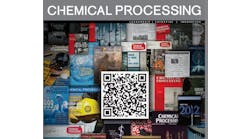Have you ever played the “telephone game?” It’s where you get a chain of people together, and the first person whispers a phrase or tidbit of news into the next player’s ear. That person then relays the message to the next participant, and so on. This goes on until it reaches the last person, who then blurts out what they’ve just heard. The first person lets everyone know if the original message made it down the chain intact or changed meaning along the way.
Ideally, the message moves along word-for-word, but the way one person recalls the phrase may be different from the previous participant. A lot rides on how the missive gets delivered and interpreted. We often see something similar play out in the real world. Create a complicated message, and confusion will ensue. You must calculate how easily people will understand instructions and relay that information to others clearly and accurately. And you also must consider spoilsports who will purposely change the message.
After reading this month’s cover story, “Untangling Emissions” by Seán Ottewell, Scope 3 certification now reminds me of the telephone game.
The CliffsNotes version of all the scopes: Scope 1 is emissions from your plant; Scope 2 is from energy sources; and Scope 3 relates to emissions from downstream and upstream activities involving assets the reporting organization doesn’t own or control but directly impacts its supply chain. This is one of the sticking points because it puts companies on the hook even if they didn’t directly create Scope 3 emissions. (See “Develop Your Decarbonization Roadmap” for a more thorough analysis.)
Oftentimes, when organizations set climate-change goals, they seek emissions information from their supply chain. For our audience, the “telephone game” starts when a chemical facility reports its certified emissions.
As the emissions message moves through the chain, it becomes apparent that there’s no consistent way to interpret and relay the information. And, along the way, it’s important that companies don’t exaggerate the message or they could be accused of greenwashing.
As Ottewell writes, much of the emissions reporting occurs over email or through supplier questionnaires, processes that are reactive and prone to error. (A lot of my telephone-game pals were equally reactive and prone to error.)
“The result is confusion, with companies implementing different strategies to address Scope 3 emissions, and activists saying many organizations are falling short of their commitments,” he says.
By the way, this article evolved from a conversation with our editorial board members, many of whom are in the thick of the Scope 3 reporting process. Members said Scope 3 reporting felt like the Wild West because there is no consistent way to estimate emissions. While they agreed that meeting these goals is a major challenge, they also noted that it’s important that they address them.
As Mesbah Sabur, founder of Netherlands-based supply chain traceability solutions company Circularise says in the cover story, “We believe that one of the biggest barriers to the shift to a more circular economy is the lack of information flow between supply-chain actors.”
It’s time to perfect this version of the telephone game and get all the players on board with the same message-delivery system because there’s a lot more riding on sustainability targets than just bragging rights.



